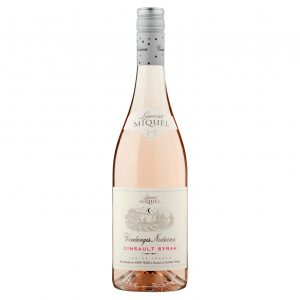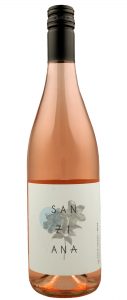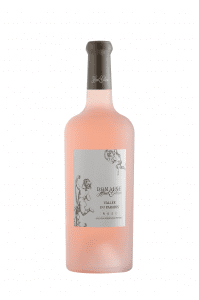Since it is almost mid-summer, now is surely the right time for a quick review of rosés that are currently available.
As the last century drew to a close, rosé as a wine style was fast disappearing in the UK – consigned like sweeter, or even off-dry, wines to the bottom shelves of “yesterday’s tipples”.
Then in 2003, came the hottest summer for over 400 years and we suddenly realised why pink wine and Mediterranean temperatures work so well together.
At first, it seemed fashionable to promote dark pink – and often off-dry – versions to serve as anytime (rather than mealtime) drinking,
Ramping up supply of that style of wine did not prove too difficult.
Slowly though, many folk came to appreciate (and then prefer) light, drier, paler and more delicate rosés recognising the delightful partnerships they forged with summer time food.
Compare supermarket rosé shelves over the last ten years and the transition from dark pink to light pink colours reinforces the point.
But where did these pale pink options come from?
Well, Europe’s rosé capital undoubtedly is France’s Provence region where some of the world’s finest rosés are made – light, dry and overflowing with flavour.
However, to show that other parts of Europe also produce sound “food friendly” wine (often at keen prices) I have selected six rosés to consider today – and none of them are from Provence.
First, though, a brief look at how rosé is made – because outside Champagne there are two main methods of production.
One involves minimal contact with grape skins (sometimes just a few hours) to extract enough antioxidants and preservatives to offer some protection without absorbing too much colour.
The other common method (saignée) draws off some juice from the grape must early on (to make what is left more concentrated) and then uses the juice removed to make rosé wine.
With its usual helpful infographics, Wine Folly describes the process in this way.
Now, however, it is time to look at the wines themselves.

Starting at the Inexpensive End
Understandably as I say, first thoughts about French rosé turn to Provence but excellent versions emanate from elsewhere in the country including this great value grenache led blend from Jean- Claude Mas in Languedoc.
Savoury edged but with just a suspicion of sweetness, 2019 Pierre Jaurant Languedoc Rosé (£5.99 at Aldi and 12.5% abv) has zesty red cherry and red currant fruit with sharp, mandarin style acidity and an attractive herbal finish.
Staying in Languedoc

Like grenache, cinsault is an important grape in Southern France (especially, in cinsault’s case, in Languedoc) mostly though used as a blending partner in red wine but it is actually a very successful component of rosé there and in Provence.
Here is a good example of its handiwork in what is an especially great value option at the moment and one where harvesting has been done in the cool of the night to preserve freshness.
Light pink yet anything but light in freshness and zing, 2019 Laurent Miquel Vendage Nocturnes Cinsault Syrah Rosé (£6.69 – instead of £8.99 until 30 June at Waitrose and 12.5%) uses a prickle of orange acidity and some savoury texture to underpin its strawberry, cherry and red current fruit and the peach influenced hint of sweetness it also contains.
And from Outside France

Romania is providing excellent wine these days and this pinot grigio based version is from the Sanziana stable and made by the excellent Cramele Recas operation who are based in Transylvania.
I rather like the chocolate centred backdrop that 2019 Sanziana Pinot Grigio Rosé (£8.25 at www.corneyandbarrow.com and 12.5%) adds to its floral cherry and tangerine fruit which, in turn, is supported by grapefruit acidity and touches of aniseed – all wrapped in light but smooth body.
England too can join in

With the climate in southern England supporting pinot noir well, we are starting to see some excellent rosé being produced there – a judgement that certainly includes this classy version from Devon.
Dark in colour but rounded in texture, 2018 Lyme Bay Pinot Noir Rosé (£16.99 at www.winebuyers.com or from the winery and 12.5%) brings us bold peach, cranberry and mango fruit with sweet edges, good acidity and a smattering of aniseed and spice to add variety.
Incidentally, when you open some wines (as with my bottle of this one) you can sometimes detect a whiff of the agents used to keep the wine in condition. These are harmless and will quickly disappear but, to enjoy the wine’s charms immediately, just splash the wine into a jug and pour it back into the bottle.
But back to France now

It was actually Corbiéres that provided this outstanding rosé which is stylish fare and exactly what Southern France does so well – gracing summer lunch tables with wine that combines delicacy and intricacy.
Pale and almost ethereal, 2019 Domaine Haut Gleon Vallée du Paradis Rosé (£15 at www.kendrickwines.co.uk and 13.5%) delivers pear and crab apple fruit with good tangerine and grapefruit acidity, clove and chocolate centred complexity and a long, rhubarb influenced finish.
Finally to fizz

When you see a combination of bubbles and rosé, thoughts turn to pinot noir but this Loire Valley version uses cabernet franc which is bird of a very different feather and provides a mineral and black pepper bite that gives this wine a distinctive twist.
If a mineral edge to your fizz works for you then you will love The Society’s Saumur Rosé Brut (£11.50 at The Wine Society and12%) with its strawberry and red plum fruit, good acidity, lively mouthfeel, hints of green pepper and, of course that savoury mineral and mocha background.
Back with you all on Monday with Top Tips on what to buy and a quick “heads up” about supermarket promotions that are about to begin.








